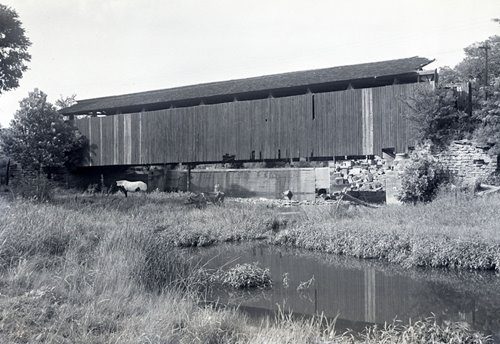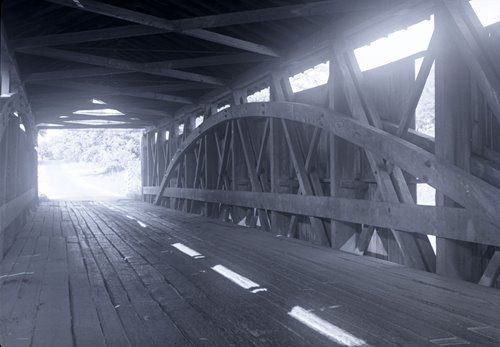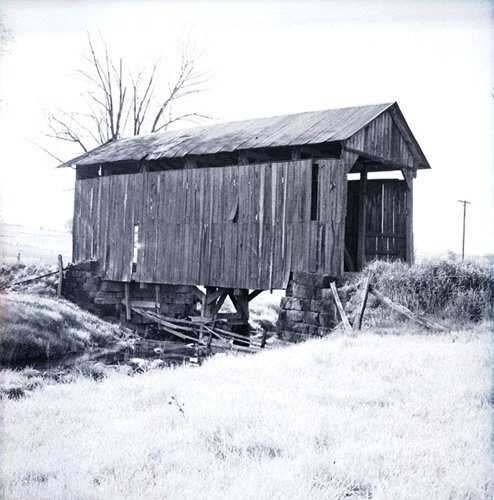Welcome to Our Summer Interns!
Meet Grayson and Grace—two of our outstanding summer interns at the Ohio History Connection!
Sometimes working in an archive requires a little bit of creative detective work. This is one of my favorite parts of the job.
Recently I worked on a collection with a particularly interesting riddle. Do you think you can solve the puzzle? Polish your deducting skills and read on!
When I look at a newly donated collection of papers and photographs one of the first questions I ask myself is: Did the previous owner organize this in a certain way? If they did organize the collection, then how? Most of the time the way someone organizes something can tell us a lot about them and their collection.
The collection at hand was made up of many photographs and negatives showing covered bridges, all organized neatly by a mysterious numbering system. Each item was labeled with a three part identification number.
So for instance this photograph is labeled with the number: 33.14.10:

This photograph is also 33.14.10:

And this one is 33.15.07:

Any idea what these numbers mean?
I’ll give you a hint: When these photographs were taken in 1949 their identification numbers both began with 33. But after 1959, the identification numbers would have been written to start with 35. [35.14.10 and 35.15.07]
Need another hint dear blog readers? The second number in the identification series can only go up to 88.
And one final clue: The first two photographs are of the same bridge in Clinton County.
Do you think you have it yet? Here’s your answer:
These identification numbers come from a covered bridge identification system developed by Ohio’s own John Diehl. The system went on to be used internationally to identify covered bridges. Here’s how it works:
The first number is the state in which the bridge is found. Diehl put all the states in alphabetical order and then numbered them. In 1949 this put Ohio 33rd in order. In 1959 Alaska and Hawaii, two states early in the alphabet, joined the union and Ohio moved down to 35.
The second number is the county in which the bridge is found. Diehl put all of Ohio’s counties in alphabetical order, 1-88. So that last image, 33.15.07, can be found in Columbiana County.
The third number stands for the specific bridge within that state and county. As new bridges are discovered they are given the next number available. That way we can know easily that the first two pictures in this post show different angles of the same bridge.
There’s even more that you can do with this identification system. Learn more here!
While today we mostly value covered bridges for their beauty, they were built early in Ohio’s history for a very practical reason: transportation and trade. Bridge builders also began to develop new ideas about the basic engineering of these structures. John Diehl himself said it best:
If you would like to learn more you can visit us in the Archives & Library to take a look at John Diehl’s collection of covered bridge photographs.